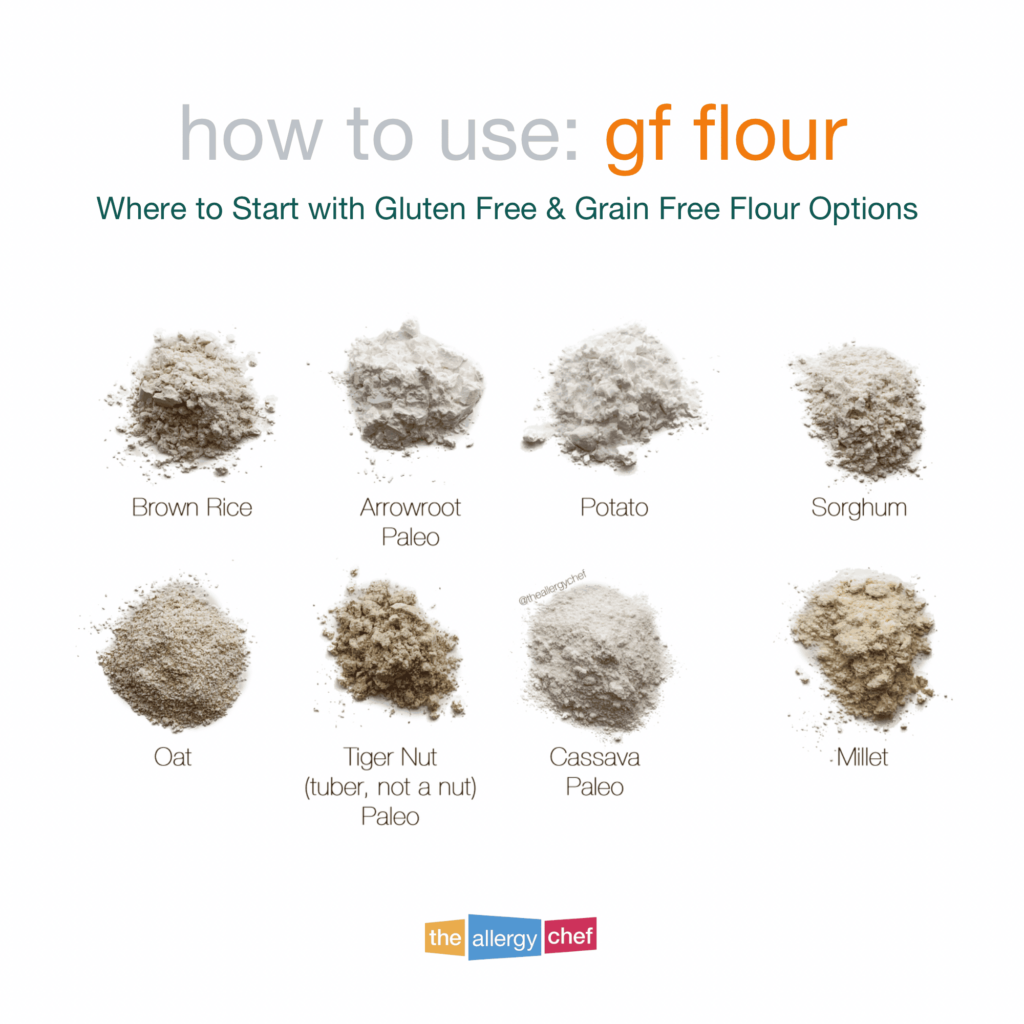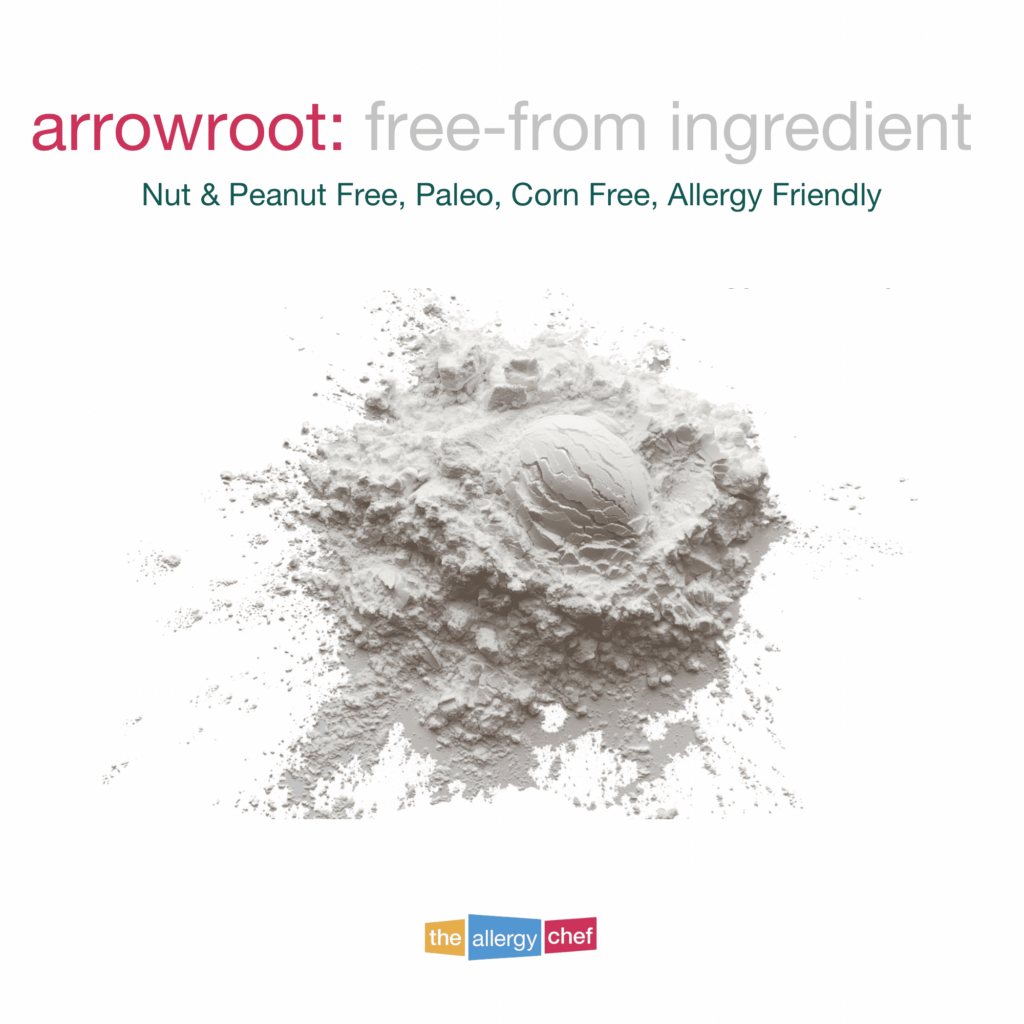Why do you choose to use so many different types of gluten free flours in one recipe? I have avoided some recipes because they require me to purchase/stock so many different flours and my apartment space is limited. Even after years of eating gluten free, I struggle with understanding why we need so many different safe flours to “replace” ordinary flour.
First, an Example: Soy Sauce
One could argue that soy sauce is in a similar boat to wheat. It’s complex, has layers of flavours, and there isn’t one single ingredient that can replace it. Sure, there are things that might remind you of soy sauce, but none of them is spot on standalone. Unless, you do what I do – you come at it from a multi-pronged approach. When I create recipes that remind people of soy sauce (that are soy free), I use several ingredients to remind them of each of the layers they’d find in soy sauce.
That’s what wheat (and gluten) is like. Modern wheat doesn’t have the layered flavour notes (that most people can pick up on), however, it has layered performance notes. Think about all of the things you can make with wheat, and how they’re all SO different. Think about the difference between a bagel and a tortilla. There are several base ingredients that overlap in them, but wow are the end results different.
There are no 1:1 Substitutions
Whilst there are some brands that make bold claims, I can tell you, there isn’t ONE gluten free flour that is a proper 1:1 substitution for wheat flour in baking. Cooking is a different domain in the case of this article. For the brands that do make this claim, they expect you to use eggs along with their flour. In those cases, the eggs are the safety net holding everything together. Without them, the recipes fall flat. Literally.
Knowing this, when a recipe developer makes a gluten free recipe, IF they want it to be successful, several flours must be used to create a blend. Some even go as far as to use ingredients I’m not particularly fond of (dough conditioners, enzymes that aren’t so natural, etc.). The extras that I personally don’t love will get you even closer to wheat/gluten based goods.
The good news is that we have an arsenal of natural, organic, and pronounceable ingredients to draw from to create gluten and wheat free foods that taste and feel AMAZING. What it does mean however is that you’ll have to have lots of flour options on hand.
For some gluten free folks, this is a barrier to entry. They see the flours and think a recipe is too complicated, too expensive, or they don’t know what to do with all the extra flour. There’s a solution for you as well. In those cases, you’ll want to use a gluten free all purpose blend (more on that later).
Gluten Free Flours Have a TASTE
It’s also important to note that gluten free flours usually have a distinct fore and after taste. In some cases, the after taste is so awful, the flour has a very limited amount of uses (or must always be used in small amounts).
Knowing this, a good recipe developer assess what they’re trying to create, which flours can help, and which flours can harm. For example, if I’m wanting to make a light and refreshing lemon meringue tart, I would not use buckwheat or quinoa flour in the tart shell dough. The end result would be too strong tasting of the flours, and might even clash with the lemon.
On the other hand, if I were making something that had the dominant flavour of chocolate or coffee, buckwheat flour would fit in nicely. In case you’re wondering, buckwheat is not wheat, and is poorly named like tiger nuts, which aren’t tree nuts.
Just Like Captain Planet: We Must Combine Powers
Remember when the Planeteers would call on Captain Planet and he would say “By your powers combined, I am Captain Planet!” and then the music would come on and we’d be jamming out? It’s like that.
Gluten free flours alone, they’re like sad little creatures, destined to be unloved. Combined however, they can be transformed into baked goods that will have the masses singing their praise. How do I know? I ran a very successful gluten free + top 9 free bakery. Thousands of people without food allergies placed regular orders because the baked goods were incredible and you couldn’t tell the goods were gluten free.
Which brings us to the answer I suppose. Yeah, that was a long winded way of getting here. The bottom line is this: without combining the different properties of gluten free flours, you’ll never come close to replacing wheat/gluten.
Back in the day, gluten free goods got such a bad rap because manufacturers weren’t combining flours. They were selling dense, overpriced bricks of single flours. Those were the Dark Days of Gluten Free. Now, manufacturers have a better understanding. Authors and chefs like myself are helping the average consumer create amazing baked goods at home. Things are really looking up for those who are gluten or wheat free.
Just remember, when you combine the taste of individual gluten free flours, and their performance, you can absolutely create amazing gluten free baked goods.
All Purpose Flour Blends
As I share earlier, for some, the list of flours needed for some recipes is a barrier to entry. Personally, I’ve never used a commercial AP (all purpose) gluten free flour blend. This is because I’m allergic to ingredients in all of the options on the market. In some cases, baking with those AP blends would cause an awful airborne reaction for me.
The other reason I’ve never used one: the extra ingredients. The commercial blends usually have xanthan, or some other type of gum to “improve your baked goods”. Truthfully, these aren’t necessary with a good blend of free-from ingredients. However, it’s a way that manufacturers can give you more of a safety net.
When it comes to brands, I know of several, but can personally vouch for none. Here are brands for you to investigate:
- Better Batter
- Bob’s Red Mill
- Cup-4-Cup
- GF Jules
- Hungry Harry’s
- Rustic Scoop
Each one will have a different flour blend and possible “extras”, so read the labels closely. Some are gluten free only whilst others are free from all or almost all major allergens.
You’ll notice that King Arthur isn’t on that list, and it’s because they are no longer producing to standards I’m willing to recommend. If you have Celiac Disease or a wheat allergy, make sure you read carefully before purchasing anything from them.
Using an AP Flour Blend in Recipes
Should you choose to use an AP flour blend, you’ll use it as a 1:1 substitution in recipes. Here are two examples.
If a recipe calls for 2 cups of brown rice flour, you would use 2 cups of your AP flour. Pay close attention to what the instructions say. Is it a packed cup, a leveled cup, or a heaping cup? Each of these amounts is a different weight, which is I personally use grams, to ensure readers can replicate the results.
If a recipe calls for 100g of sorghum, 70g of millet, 40g of oat, and 30g of arrowroot, you’ll add them up. In this case, the total flour weight is 240g. You’ll use 240g of your AP flour blend instead.
Warning: AP Flour Won’t Always Work
Depending on what you’re doing, the AP flour blend you have may not be a good option. Some brands print a warning, or suggested uses, on the back of the package. They’re letting you know up front which settings are good for their blend. I happen to know that not every brand can be used for gluten free bread.
Alternatively, if you’re cooking with flour (perhaps a roux or fry batter), you may be better off using what the developer has called for. Tempura is an excellent example of how changing the flour can ruin the overall batter.
Make sure you really understand what the recipe is trying to accomplish before you try changing things. If you’re unsure, reach out to the recipe developer. These ingredients are expensive, and I’d hate to see you waste them on a bad swap.
Enjoy your gluten free baking!
~The Allergy Chef
Have a question? Send it to ask@theallergychef.com
Further Reading
 |
 |

